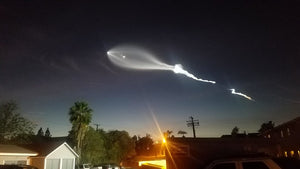January- Mars Opposition, the Gold Dust Cluster, and the Great Orion Nebula Await!
Great Orion Nebula - M42
On a crisp winter evening, it’s nearly impossible to resist the allure of the Great Orion Nebula (M42). Nestled in the sword of the Orion constellation, this iconic deep-sky object captivates stargazers of all levels.
To the unaided eye, the nebula appears as a faint, misty patch of light. However, even a modest telescope transforms it into a stunning sight: a textured, smoky cloud with subtle greenish hues. The nebula’s ethereal appearance hints at the vast region of gas and dust that forms this stellar nursery.
At the heart of M42 lies the Trapezium, a group of four young, brilliant stars that illuminate the surrounding cloud. Their intense ultraviolet radiation sculpts and lights up the nebula, making it one of the most visually compelling and scientifically significant objects in the winter sky.
Mars Opposition & Occulted
Mars, unlike the outer planets Jupiter and Saturn, reaches opposition approximately every two years. Its last opposition took place in December 2022, when it shone with a brilliance of magnitude -1.9 in the constellation Taurus. This year, Mars will reach opposition on January 15, appearing in the constellation Gemini, near the bright stars Castor and Pollux. Though dimmer than its 2022 appearance, at magnitude -1.4, the planet will remain a striking copper-colored point in the sky, easily visible to the naked eye and an impressive target for telescopes.
Two days before opposition, a rare astronomical event will occur as the Moon passes directly in front of Mars, an occultation. This alignment offers a unique opportunity for observation. The timing of the occultation will depend on the observer's location. On the East Coast of the United States, Mars will disappear behind the Moon between 9:00 PM and 9:30 PM local time, while West Coast observers will see the event earlier, between 5:45 PM and 6:30 PM. The planet will reappear from behind the Moon after 35 minutes to just over an hour, depending on the viewing location.
The Gold Dust Cluster- M37
Messier 37 (M37), the brightest and richest of the three open star clusters in the constellation Auriga, is a rewarding target for stargazers. Located near the star Theta Aurigae, it is easily visible in the same field of view through 10x50 binoculars, making it accessible even for beginner astronomers.
When viewed with a small telescope at low magnification, around 30x, M37 reveals a stunning, densely packed cluster of stars. Its appearance is marked by a beautiful contrast of faint white stars and a slightly brighter yellow-orange star near the center, adding depth and variety to the view. With its symmetrical distribution and vibrant star field, M37 is often described as a "splash of stars."
M37 lies approximately 4,500 light-years from Earth and contains hundreds of stars, many of which are thought to be over 300 million years old, offering a glimpse into stellar evolution.







